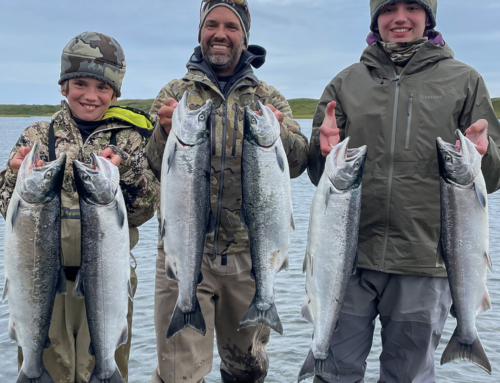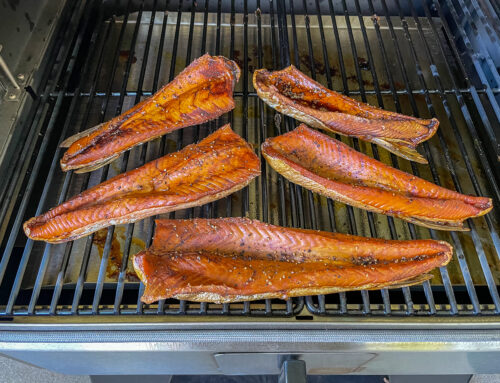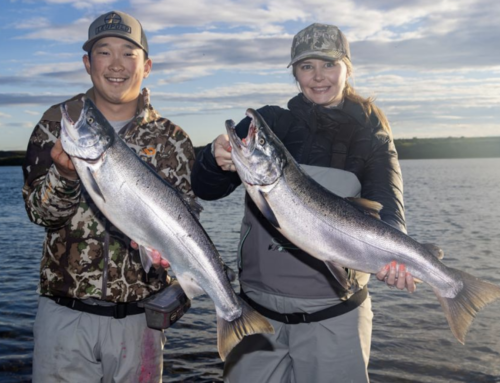A while back we shared a recipe on our Becharof Lodge website that showed how to cook venison on a salt block. In this part of Alaska, we’re fortunate to get some big bull moose and lots of salmon, and folk take home plenty of meat. Many people loved that salt block venison recipe, not only for the flavor it created, but also for the moist end product. Fish can also be cooked on a salt block, and Alaskan salmon are most excellent when cooked this way, thanks to a high oil content.
At Becharof Lodge we get a lot of people asking about salmon recipes; the more they can get, the better. This is because anglers want variety in the fish they eat, and going home from our camp with 50 pounds of coho salmon, means you’ll have plenty of opportunity to cook up fish a lot of different ways once you get home, and throughout the year.
Salmon cooks quickly, stays moist and is seasoned to perfection when seared on a salt block. Cooking salmon on a salt block is one of the easiest ways to cook fish there is, and no, it won’t turn out too salty tasting. Cooking salmon on a salt block is a great way to sear thin slices of meat and a variety of different vegetables.
1 pound salmon fillet
1 teaspoon brown sugar
1/4 teaspoon granulated garlic
1/4 teaspoon granulated onion
1/4 teaspoon coarse ground black pepper
1 Himalayan Salt Plate
Warm salt block gradually. Place salt plate on grill or gas stove on low heat for 10 minutes.
In a small bowl, mix brown sugar, garlic, onion and pepper until thoroughly combined. Cut salmon fillet into four servings. Sprinkle seasoning over salmon gently rubbing on to all sides.
Increase the heat on the salt plate in 10-15 minute intervals from low to medium-low to medium to medium-high, until the plate reaches 500º. If you don’t have an infrared thermometer, heat the plate until a sprinkle of water sizzles on the surface.
Place salmon fillets on salt plate, flesh side down, cook 2-3 minutes and gently turn over using a metal spatula. Finish cooking another 1-2 minutes on each side or until fish reaches desired doneness or an internal temperature of 135º. To cook vegetables, place on hot salt plate, turning occasionally until they reach desired doneness.
There are a variety of heat sources a salt plate can be used on but they are most commonly placed over a gas stove or grill. Salt plates should be kept dry and heated slowly to avoid cracking. Once the salt plate has reached 500º, the cooking begins. The salt plate not only sears the food, but keeps it moist during the cooking process. Like plank cooking, it also keeps the mess off of the grill and keeps food warm until serving time. Always use heat-resistant gloves to move a hot salt plate and put something between the salt plate and the table when serving.
CLEAN-UP: Cleaning the salt plate is easy. Simply cool the plate, get it damp with water and gently scrub with a metal scraper edge to remove food particles. For a deeper clean, the plate can be rinsed off with warm water but never immerse in water as the plate will begin to dissolve. Air dry plate before storing.






